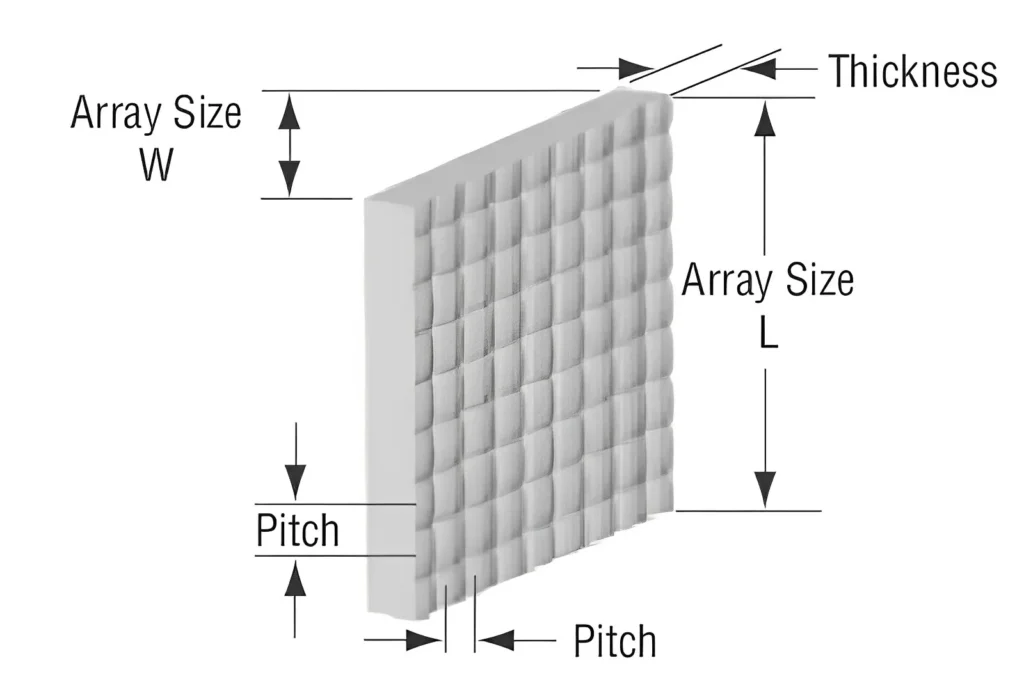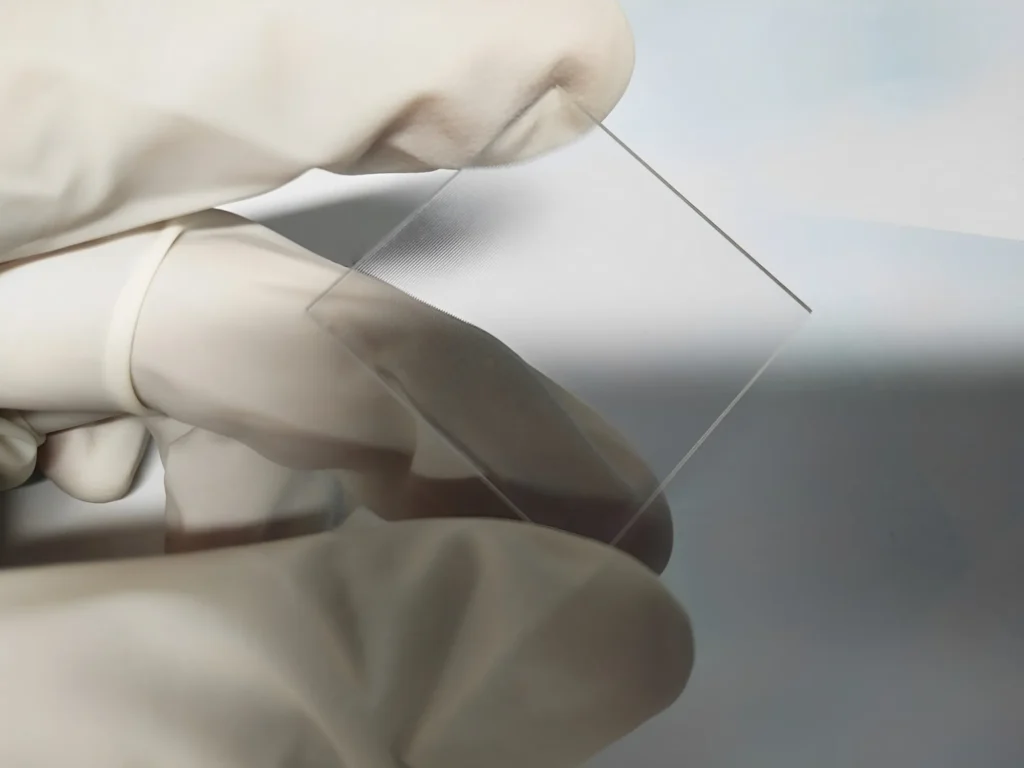Introduction: Understanding Microlens Arrays
Microlens arrays are pivotal components in various optical applications, including imaging systems, light collection, and beam shaping. Two critical parameters that influence the performance of a microlens array are its focal length and unit cell size. This article explores how these factors impact the optical efficiency and capabilities of microlens arrays.

Focal Length
The focal length of a microlens array directly influences its imaging and light manipulation capabilities:
Longer focal lengths allow for:
- Larger working distances between the array and the image plane.
- Reduced spherical aberrations.
- Better performance for applications requiring collimation or long-distance focusing.
Shorter focal lengths provide:
- More compact optical systems.
- Higher numerical aperture (NA) and light collection efficiency.
- Improved performance for applications like light concentration or short-distance imaging.
Unit Cell Size
The unit cell size, which determines the diameter and spacing of individual microlenses, affects several performance aspects:
Smaller unit cells enable:
- Higher resolution imaging or light manipulation.
- More compact overall array designs.
- Potentially reduced optical aberrations.
Larger unit cells allow for:
- Higher light collection efficiency per lens.
- Easier fabrication and potentially lower costs.
- Better performance for some applications like light homogenization.
Interplay Between Focal Length and Unit Cell Size
- The f-number (f/#) of a microlens is determined by the ratio of focal length to lens diameter. A balanced f/# is important for optimal performance.
- The numerical aperture (NA) is inversely related to the f/#. Higher NA (achieved with shorter focal lengths relative to lens diameter) increases light collection efficiency but may introduce more aberrations.
- For a given focal length, smaller unit cells result in higher f/# and lower NA, while larger unit cells decrease f/# and increase NA.
Application-Specific Considerations
- Imaging applications often benefit from smaller unit cells for higher resolution but require a balance with light collection needs.
- Beam shaping or homogenization may prefer larger unit cells for better light control.
- The optimal combination depends on factors like the wavelength of light, desired field of view, and specific application requirements.
Fabrication Constraints
- Very long focal lengths or extremely small unit cells can be challenging to fabricate, requiring advanced techniques.
- The ability to precisely control both parameters is crucial for achieving desired optical performance.
Conclusion: Balancing Parameters for Optimal Performance
In conclusion, the optimal focal length and unit cell size for a microlens array depend on the specific application and desired performance characteristics. Designers must carefully balance these parameters to achieve the best combination of resolution, light collection efficiency, aberration control, and overall system performance for their intended use case.
FAQs:
- What is the impact of focal length on microlens array performance?
The focal length influences the working distance, spherical aberrations, and suitability for specific applications like collimation or light concentration. - How does unit cell size affect the resolution and light collection of a microlens array?
Smaller unit cells enhance resolution and compactness, while larger cells improve light collection efficiency and ease of fabrication. - Why is the interplay between focal length and unit cell size important?
Balancing focal length and unit cell size determines the f-number and numerical aperture, affecting overall optical performance and application suitability.


